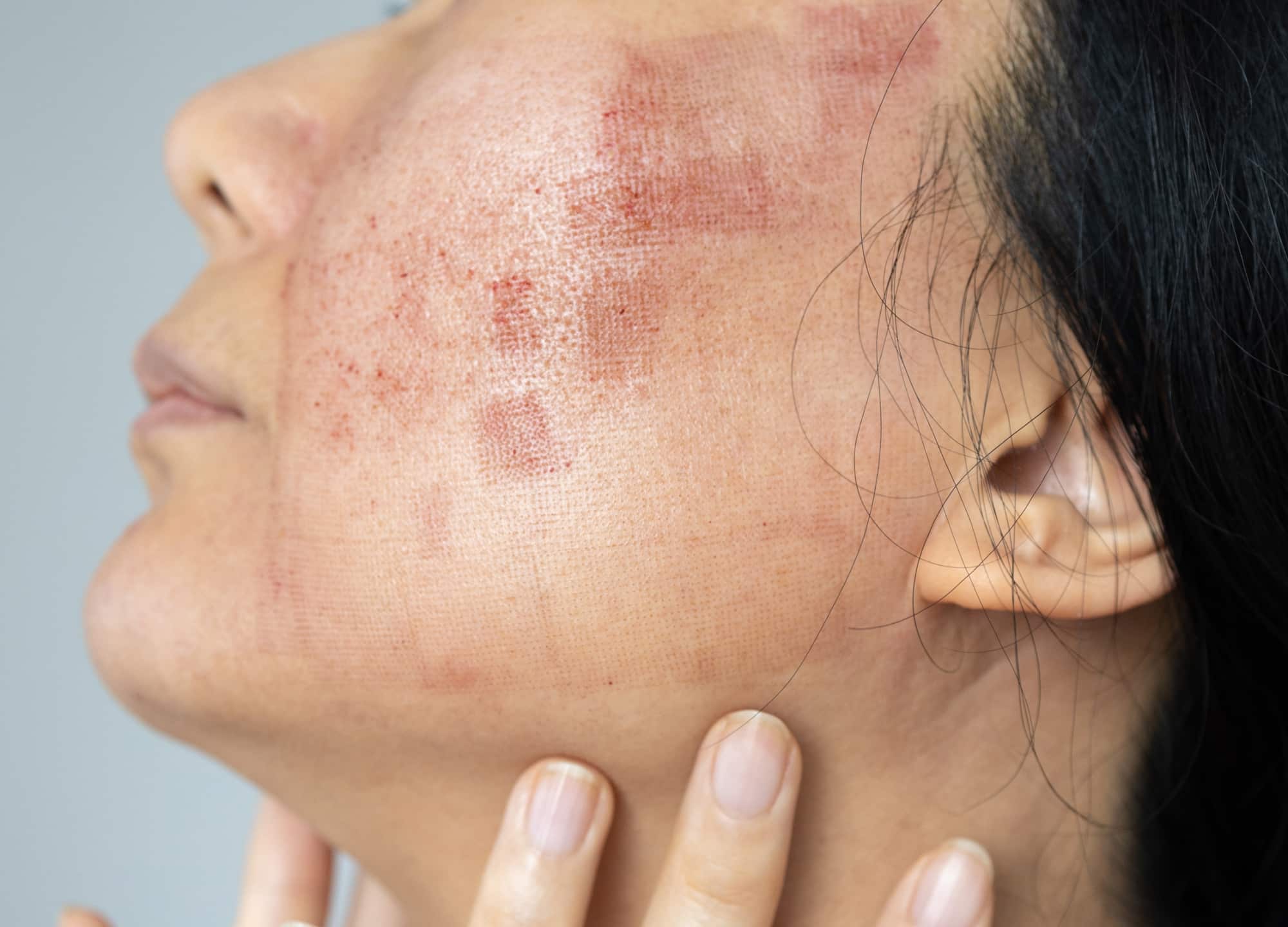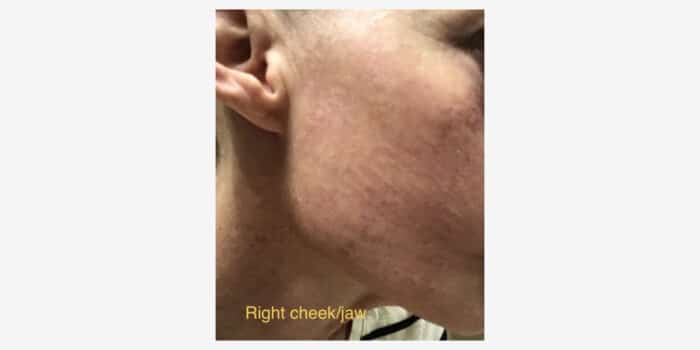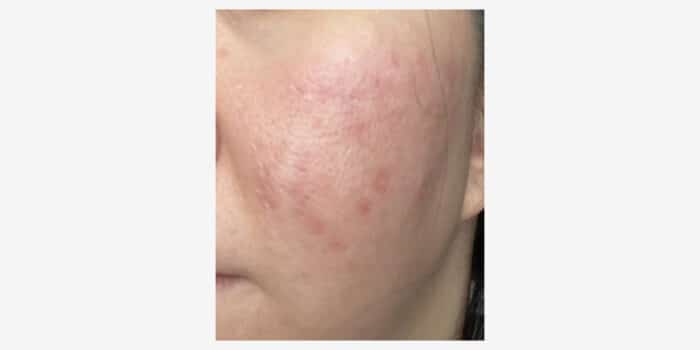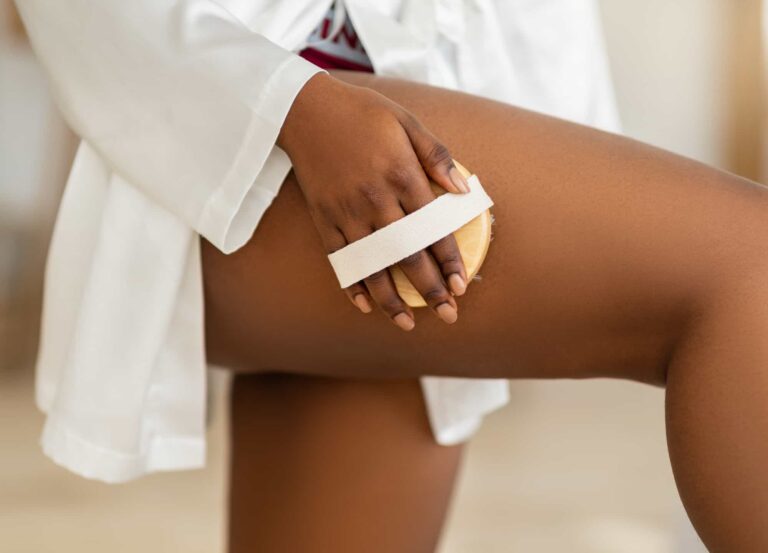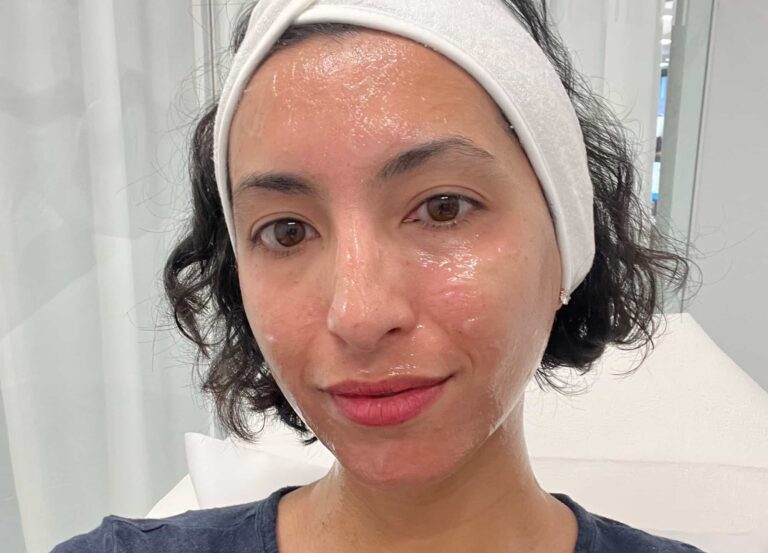Featured Experts
Dr. Lyle Leipziger, a board-certified plastic surgeon in New York City
Dr. Joseph Russo, a board-certified plastic surgeon in Boston
Dr. Kenneth Mark, a board-certified dermatologist in New York City
Lasers can be one of the most convenient ways to address a ton of concerns, from unwanted body hair to uneven skin texture. But even though they’re noninvasive and generally come with minimal downtime, that doesn’t mean they can’t go wrong. Botched laser procedures can be serious and long-lasting; a study in JAMA Dermatology found that the most common complications of laser procedures were burns, scars, and changes in pigment (in that order), with burns accounting for almost 50% of the overall side effects.
Not only can they be discouraging, but these complications can also be “permanent until fixed,” says Dr. Kenneth Mark, a board-certified dermatologist in New York City. Early action—not to mention the proper treatment from a pro—can make a big difference in both their severity and lasting impact. With that, here’s what you need to know if your laser treatment goes wrong.
Know what’s normal and what’s not
While what’s considered “normal”—and therefore not concerning—can vary depending on the exact treatment you received, it’s typical for skin after a laser treatment to be “red and peel and even show signs of crusting,” says Dr. Lyle Leipziger, a board-certified plastic surgeon on Long Island and in New York City. It’s also considered normal to have some level of swelling in the area you got treated, he says.
On the other hand, the signs of a botched laser procedure include burns, blistering, and changes in skin color—that is, either hyperpigmentation (darkening of the skin) or hypopigmentation (lightening of the skin), according to Boston-based board-certified plastic surgeon Dr. Joseph Russo. You should also keep an eye out for significant pain—more than your provider told you to expect—as well as wounds that won’t heal.
When to call your doctor
If you suspect you’re seeing signs of a botched laser procedure—or notice a dramatic change in your skin in the days after your treatment—you should make an appointment with a medical professional, be it your dermatologist or PCP (or, if you were treated at a medspa, the medical director). This should happen ASAP, says Dr. Russo.
Since the outcome of a botched treatment can be serious and long-lasting, it’s worth making the effort to see your provider to get an in-person assessment and the right gameplan to manage the complications.
How to treat a botched laser procedure
A gentle, fragrance-free cleanser and moisturizer are a good start, but they’re not always enough to handle these complications. “People get in trouble by undertreating and just treating with soothing ointments,” says Dr. Mark.
A trip to your doctor can not only help you get properly assessed but also give you access to prescription-only topicals. The most likely culprit behind these complications tends to be too much inflammation, says Dr. Mark. So “the key is to jump all over it and put the fire out with a prescription-strength topical steroid,” he says. “The stronger the better if on the body, but if it’s on the face, you have to be more careful.” One topical, prescription-only option he recommends for hyperpigmentation, in particular, is the Kligman formula, named for the professor who devised it; it’s a cream that combines cortisone, hydroquinone, and a retinoid, which can lighten dark patches.
It’s also critical to avoid potential sources of additional inflammation—be it sun exposure, essential oils, or even additional laser treatments like IPL. “In general, you need to be very careful treating a laser complication with another laser treatment, especially if the problem is hyperpigmentation,” says Dr. Mark. It has the potential to cause complications on top of your original issue, making matters worse.
You should also hold off on using exfoliants of any kind, be they chemical or physical. And because heat can stimulate further damage—since it can increase inflammation—avoid saunas and working out, says Dr. Russo.
Once the area has healed, you can then explore other options under the direction of your doctor—for instance, hyperpigmented skin can benefit from regular retinoid use as well as applying products with growth factors, says Dr. Russo.
How to avoid a botched laser procedure
During your consultation—or at any point before your procedure, really—your provider should walk you through what reactions are normal and which aren’t. Plus this can be helpful to make sure you’re getting the right treatment in the first place. “Different skin types can react differently to lasers,” says Dr. Leipziger. “Prior to receiving a treatment, each patient should ensure they are a proper candidate.”
This is especially important if you have dark skin, since some lasers work only for certain Fitzpatrick skin types. (Not only that, but those with dark skin are at a higher risk for developing hyperpigmentation.) In that case, your provider might recommend that you “pretreat with bleaching creams or SkinMedica Even and Correct Advanced Brightening Treatment,” says Dr. Russo.
Finally, avoid getting any sun exposure (or using a tanning bed, although this should already be off limits) before your treatment, and stop using any retinoids seven days before your procedure.







